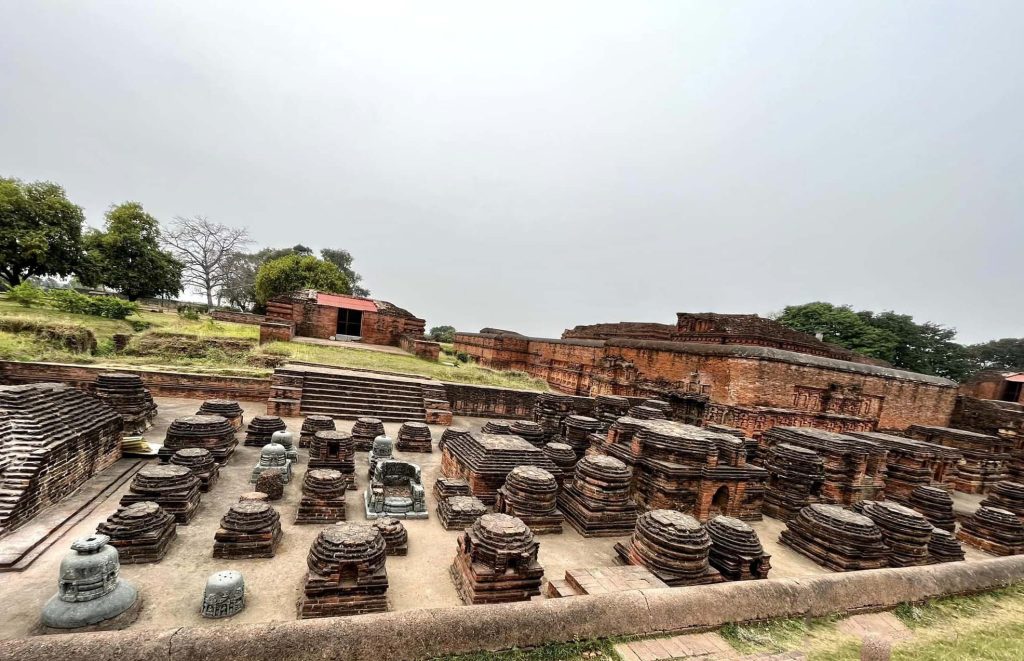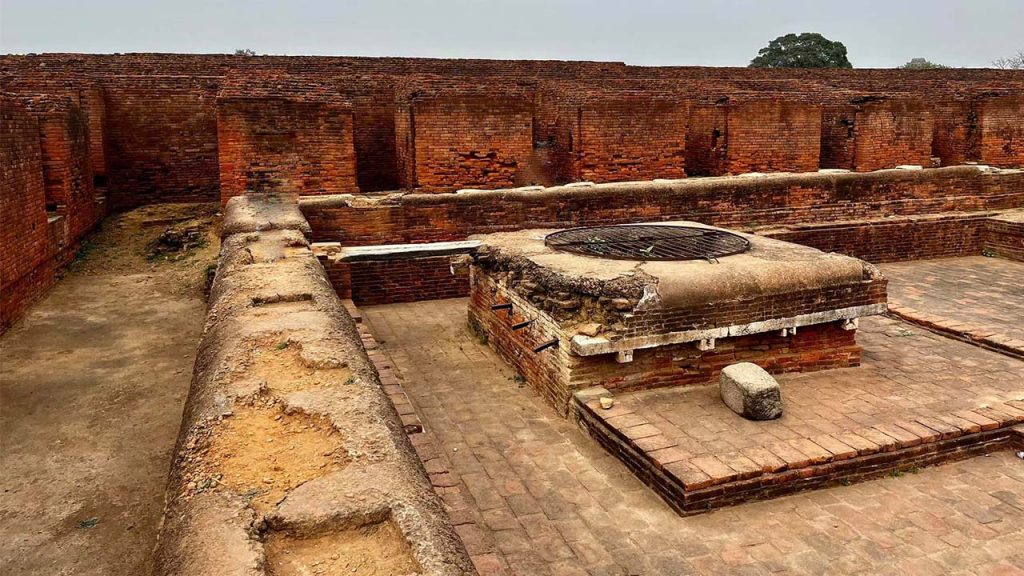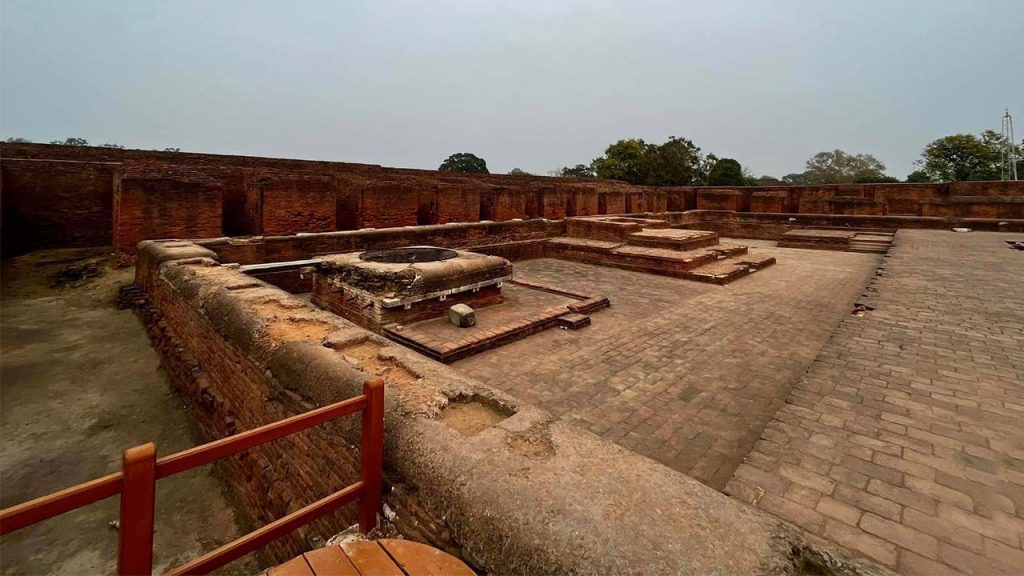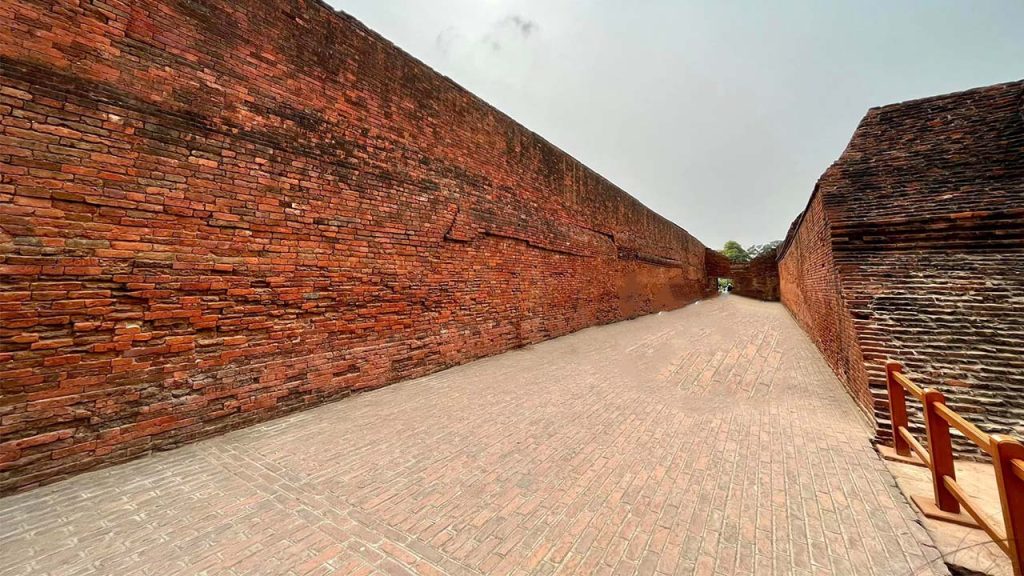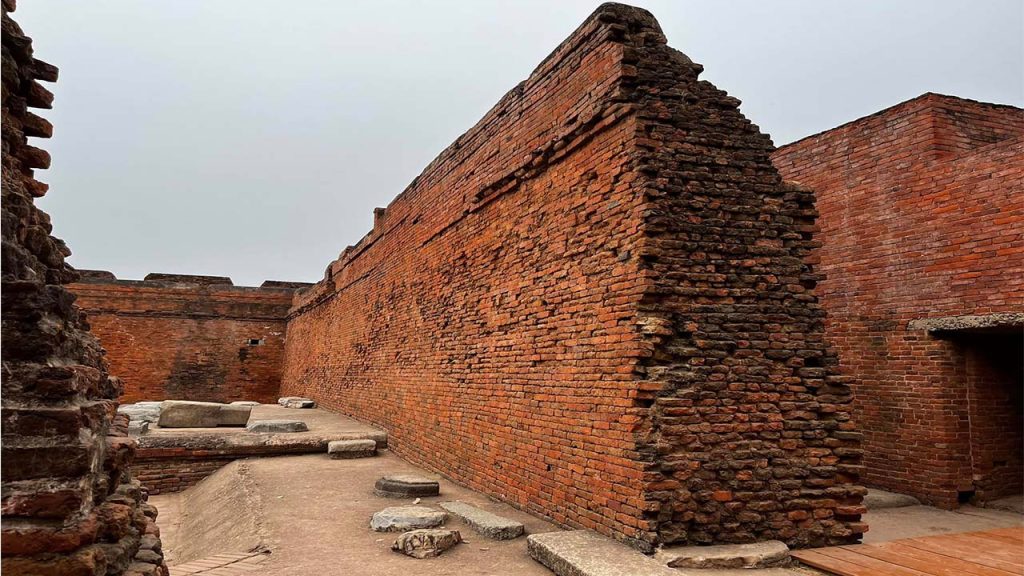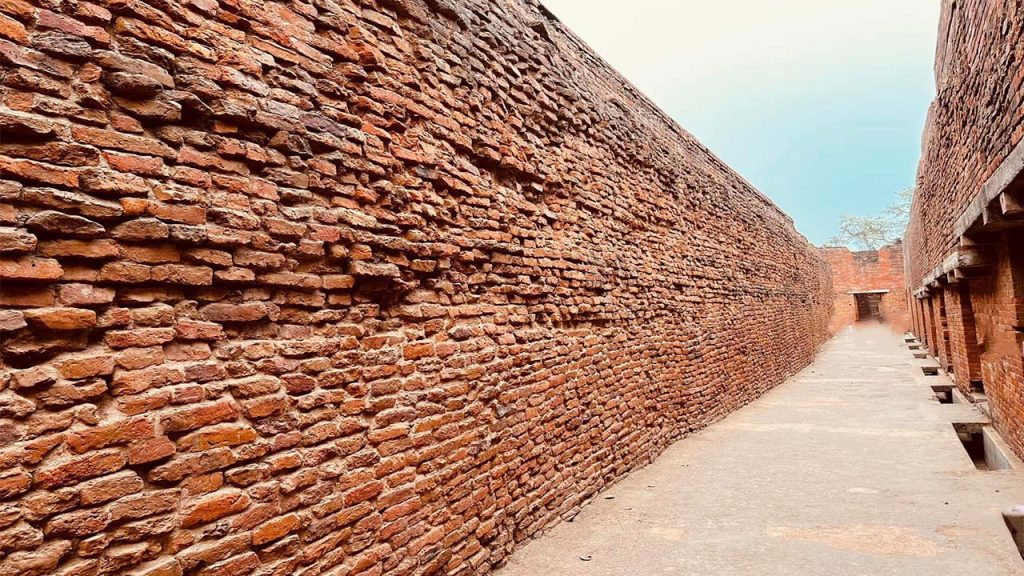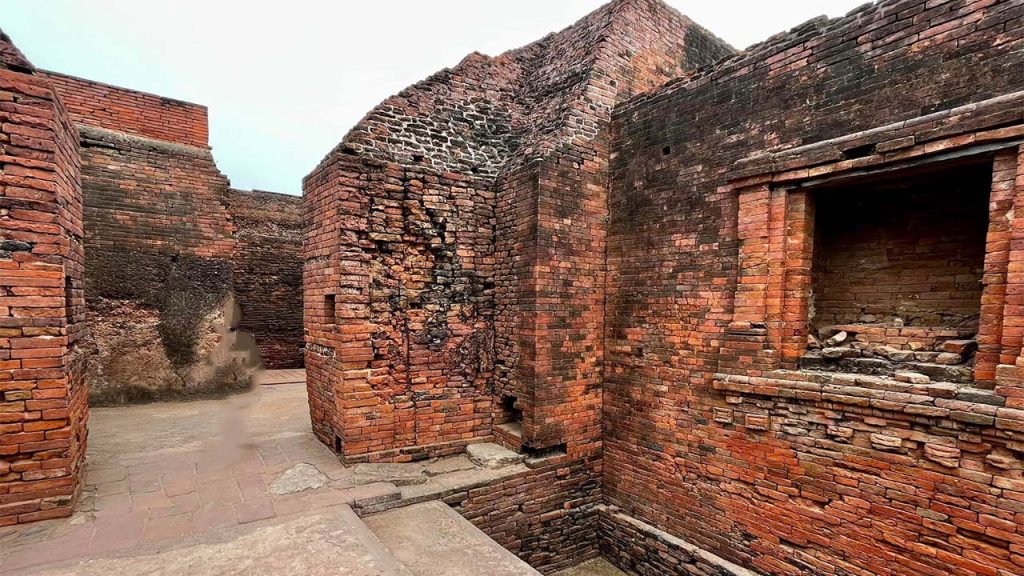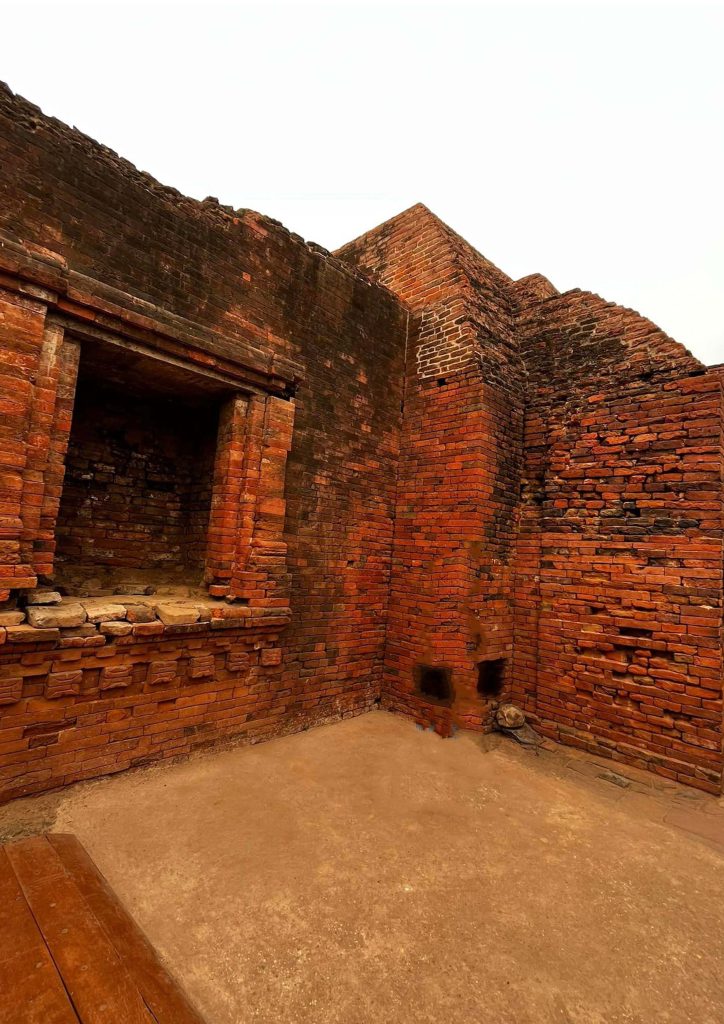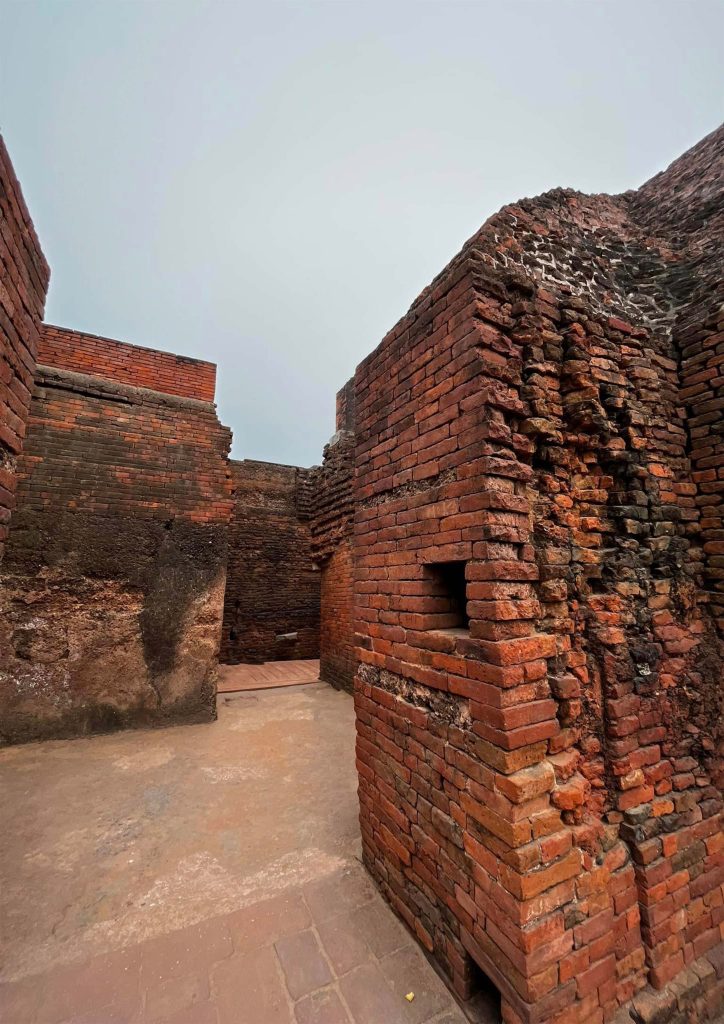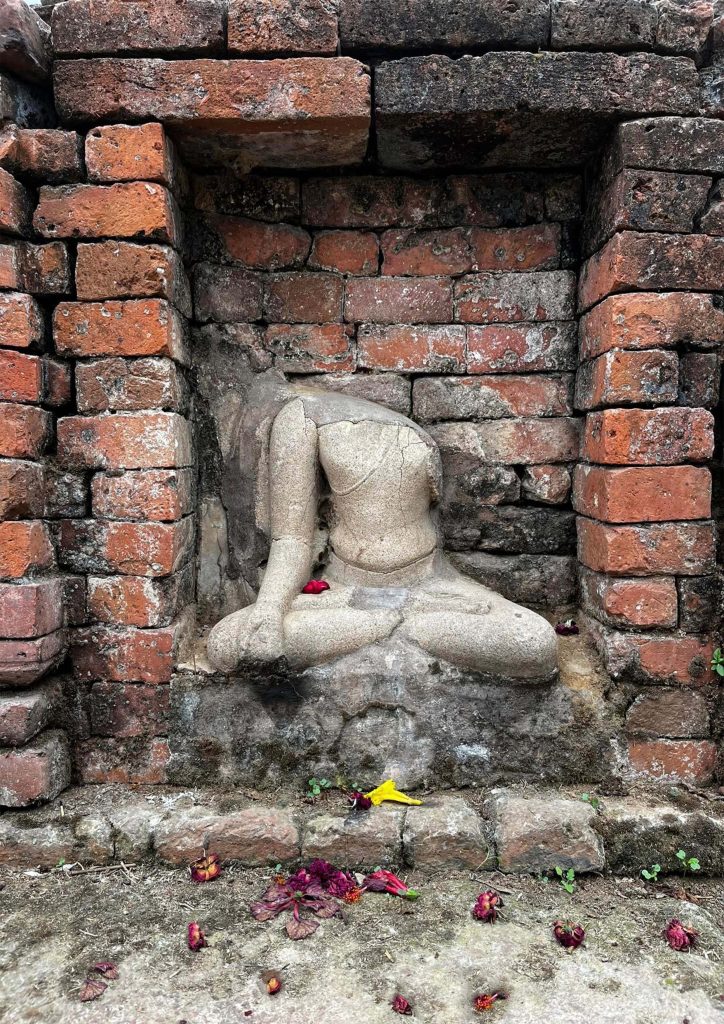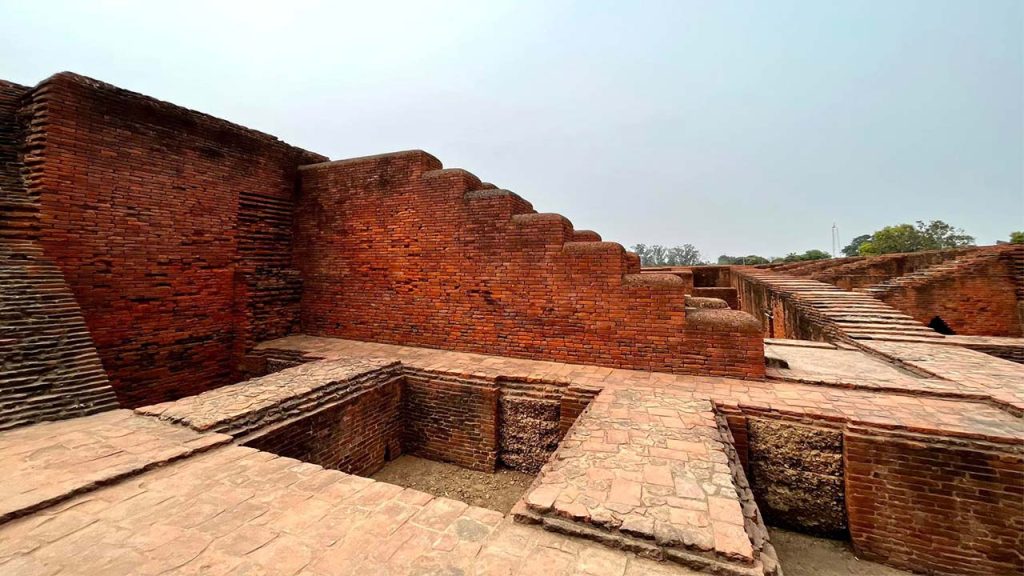
In the historic Indian kingdom of Magadha (present-day Bihar), Nalanda was a famed Buddhist monastery that also served as a renowned centre of study. One of the largest learning institutions in the entire world, it was.
The brick building, which is spread out over 12 hectares, may be seen if you go around 80 kilometres to the southeast of Patna, the state’s capital. This was where the most prestigious educational institution in the world existed. It had a sizable campus with numerous universities, libraries, student housing and dorms, places of worship and meditation, and Buddha statues. Nalanda is located in the illustrious and most significant Mahajanapada, or Magadha, and is bordered by some significant cities, including Rajgir and Vaishali, which are currently close to Bihar Sharif town.
Regarding the history of Nalanda University, numerous theories have been put forth by various historians. While there are several halls at Nalanda, it is unclear exactly when it evolved into a full-fledged centre of study. The question of whether Nalanda should be considered a university or just a monastic complex is one that academics dispute.
Even though Kumargupta I, a Gupta emperor, created the institution, the Gupta Empire’s kings gave the monks of Nalanda a lot of support and favor. Along with providing support, Kumargupta I’s successors also constructed some buildings including a place of worship for the institution.
The Nalanda University received support from Harsha, the great ruler of Kannauj, after the decline of the Gupta empire in the sixth and seventh centuries. For the institute’s smooth operation, he transferred the income from over 100 villages. He also supports 1,000 Buddhist monks who are members of his congregation. He has donated some well-known donations and erected numerous temples, temple buildings, and Buddha and bodhisattva statues. Additionally, he made donations for the school’s professors, monks, and students’ needs for food, literature, and other requirements.
It would seem that Devapala was Nalanda’s most important benefactor. There were a lot of metal sculptures with references to the Devapala unearthed among the Nalanda University’s ruins.
A council headed by the institute’s top monks was in charge of running Nalanda. To resolve the matter or make any decisions pertaining to the operation and welfare of the institute, a formal meeting was conducted with this council and senior monks. Everyone was expected to sincerely abide by the institute’s severe and rigid rules and regulations.
The minimum age for entrance at Nalanda University was twenty years old, according to the Chinese Buddhist monk I-Tsing. He stated that the campus has 8 huge halls that could each hold up to 300 compartments. Thousands of monks emerged from their “vihara” (monasteries) to take a bath in the large bath pools on and around the campus every morning as he detailed his daily routine at Nalanda University. This bell signaled the bathing time. The sound of another bell indicated that it was time to worship or perform rites on the Buddha statue. After that, in the evening, there was a ceremony called “chaityavandana” that featured a “three-part service” and the recitation of the customary hymns to Buddha.
The Buddhist iconography also served as inspiration for the art and architecture in Nalanda, where many Mahayana and Vajrayana pictures were first viewed. Numerous stupas were carved with Buddhist symbols, including images of the Buddha and bodhisattvas, on their walls. Due to their baked red brick construction, ample gateway width, and availability of “vatikas” (parks for meditation), the architecture of Nalanda was carefully maintained.
The city of Nalanda and its surroundings are full of stone and bronze statues. These include statues of the Buddha in various poses and the various manifestations of the gods who are linked with him, including Marichi, Maitreya, Jambhala, Vajrapani, and Avlokiteswara. There were also several Hindu deity sculptures, including those of Mahisasuramardini and Shiv-Parvati. Along with it, numerous terracotta objects, coins, seals, copper plate inscriptions, and ceramics were also discovered.
With students from nations including Japan, China, Korea, Turkey, Tibet, the Mongol Empire, Persia, and more, Nalanda was the largest and most distinguished university in Asia. The university used to educate a wide range of courses, including mathematics, science, ayurveda, architecture, medicine, religion (particularly Buddhism), Vedic literature, philosophy, warfare, history, and literature, among many others. Education at Nalanda University was of the highest caliber. After completing their study, students used to be assigned to monarchs’ courts, and many of them were even requested to work as translators or consultants in nations like Japan and Korea. The complex’s libraries are particularly noteworthy because Nalanda held the best and largest collections. There were four enormous libraries within the complex: Dharmaganja, also known as Dharmgunj, Ratnasagar, Ratnodadhi, and Ratnajaka. There was a nine-story library among them. There were more than 90 lakh books in the complex’s library. It was a university with a global reach. The nicest aspect for those who previously studied here was that there were no fees. The kings and other people contributed to the university’s funding. The university was supported financially by donations from supporters and the patronage of rulers.
When Hindu beliefs and the bhakti movement were introduced to the subcontinent, the destruction of the Nalanda began. The decline of the Buddhist kings and the introduction of Buddhism as a practise occurred in the 12th century as a result of this philosophical and bhakti movement. Additionally, the university was unable to shield them from these ideological and political conflicts. Then a school of Buddhism that engages in tantric practices, trusts in the power of charms, and engages in covert rites rose to prominence at that time. The institute and Buddhism both declined as a result of this.
After that, during his conquest of north India in the 13th century, Afghan military ruler “Bakhtiyar Khilji” dealt the ultimate blow to its annihilation. The Nalanda University was completely looted, burned, and set on fire by him.
In his book “Tabaqat-e-nasiri,” the modern scholar “Minhaj-i-Siraj” said that “thousands of monks were burnt alive and thousands were beheaded as Khilji tried his best to eradicate Buddhism.” To ensure the complete devastation of the university, thousands of books and records were set on fire. For several months, libraries were set on fire, and the smoke from the burning books covered the low hills like a gloomy fog.
The demolition of Nalanda University is the subject of another circulating rumor. A naga suffered an injury the day when King Sakraditya was laying the foundation for the institution. Back then, harming naga was seen as a serious transgression. The monarch went to the sorcerer right away to ask for advice on whether to keep building the institution or cease. The soothsayer responded that this university once would become the most renowned and internationally recognized university where students from all over the world would come to seek knowledge but that as a naga has been harmed, so too would this university face the same massacre.
The soothsayer had already revealed his prophecy of its annihilation in this manner.
